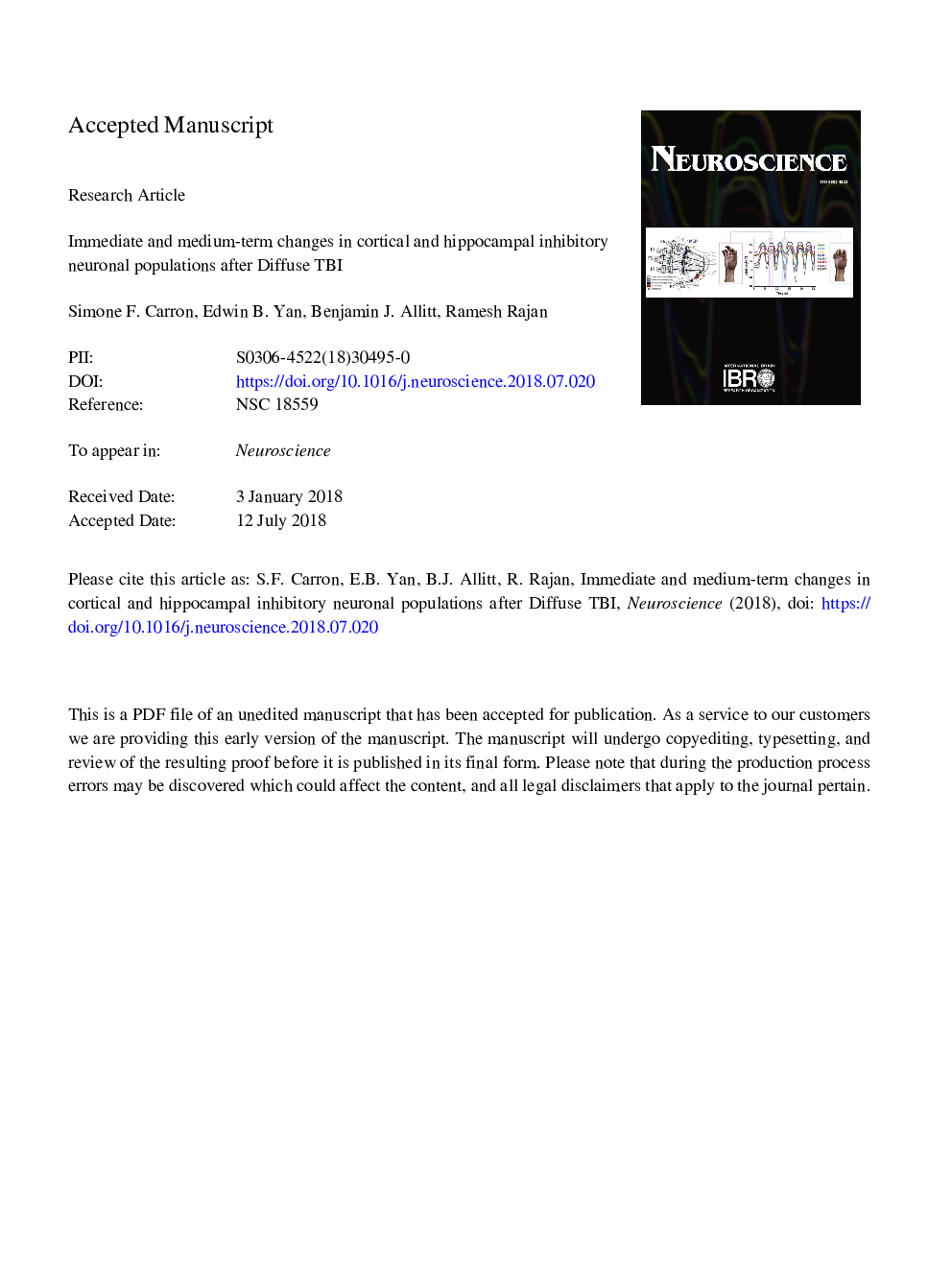| Article ID | Journal | Published Year | Pages | File Type |
|---|---|---|---|---|
| 8840546 | Neuroscience | 2018 | 51 Pages |
Abstract
Changes in inhibition following traumatic brain injury (TBI) appear to be one of the major factors that contribute to excitation:inhibition imbalance. Neuron pathology, interneurons in particular evolves from minutes to weeks post injury and follows a complex time course. Previously, we showed that in the long-term in diffuse TBI (dTBI), there was select reduction of specific dendrite-targeting neurons in sensory cortex and hippocampus while in motor cortex there was up-regulation of specific dendrite-targeting neurons. We now investigated the time course of dTBI effects on interneurons in neocortex and hippocampus. Brains were labeled with antibodies against calbindin (CB), parvalbumin (PV), calretinin (CR) neuropeptide Y (NPY), and somatostatin (SOM) at 24â¯h and 2â¯weeks post dTBI. We found time-dependent, brain area-specific changes in inhibition at 24â¯h and 2â¯weeks. At 24â¯h post-injury, reduction of dendrite-targeting inhibitory neurons occurred in sensory cortex and hippocampus. At 2â¯weeks, we found compensatory changes in the somatosensory cortex and CA2/3 of hippocampus affected at 24â¯h, with affected interneuronal populations returning to sham levels. However, DG of hippocampus now showed reduction of dendrite-targeting inhibitory neurons. Finally, with respect to motor cortex, there was an upregulation of dendrite-targeting interneurons in the supragranular layers at 24â¯h returning to normal levels by 2â¯weeks. Overall, our findings reconfirm that dendritic inhibition is particularly susceptible to brain trauma, but also show that there are complex brain-area-specific changes in inhibitory neuronal numbers and in compensatory changes, rather than a simple monotonic progression of changes post-dTBI.
Related Topics
Life Sciences
Neuroscience
Neuroscience (General)
Authors
Simone F. Carron, Edwin B. Yan, Benjamin J. Allitt, Ramesh Rajan,
